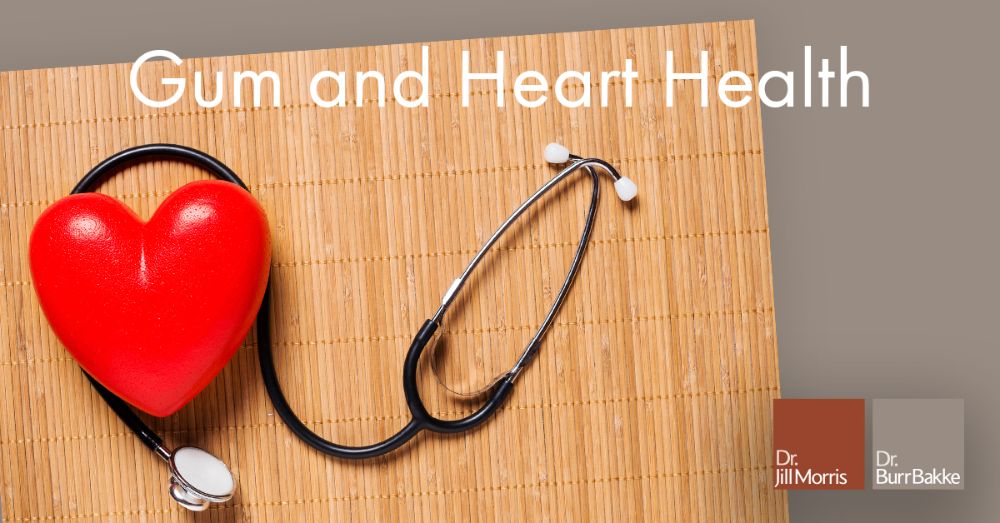Most people are shocked to learn that half of all heart attack and stroke victims have normal blood cholesterol levels. Cholesterol levels used to be the gold standard in predicting the chances of developing heart disease. Today, new findings linking cardiovascular disease and gum disease are changing the testing standards in medicine.
A study released in the British Medical Journal confirmed that dental health is significantly worse in people that have an acute heart attack. Poor oral hygiene leads to bleeding gums that allow bacteria to pass directly into the blood stream. This sets up a domino affect that leads to a two to four times higher risk of heart attack than those people who don’t have gum disease.
Vitamin D deficiency that leads to the loss of the gum attachment to the tooth can also be a pathway of bacteria traveling into the body. Many Americans today have vitamin D deficiency and physicians now routinely order blood tests to test for this and prescribe a regimen of oral vitamin D3 when needed.
There are 500-800 different types of bacteria that live in the mouth. If the teeth are not cleaned daily under the gum tissue, the gums ulcerate. This is painless and many times undetected. The bacteria pass into the blood stream which causes an inflammation reaction and the release of cytokines (inflammatory cells). This causes an inflammatory burden on the whole system. This stimulates the production of C Reactive Protein(CRP) in the liver. An increase in CRP levels indicate and increase the risk of heart attack.
The American Heart Association has identified gum disease or periodontitis as one of the major chronic infections that increase your chances of heart attack and coronary artery disease. The bacteria invade tissues throughout the body. These bacteria have been found in the hardened plaques of the arteries.
Chronic infections of the teeth and gums:
1. Increase the risk of heart attack 4 fold
2. Double the chances of having a stroke
3. Increase the chances of respiratory disease
4. Can make it impossible for diabetics to control their blood sugar
5. Forty million pre-diabetics could become diabetic because of chronic gum disease
Research has found that people can live 6-10 years longer if they take good care of their teeth and gums.
“BUT MY GUMS DON’T BLEED”
Many people are not aware they have an infection in the deeper areas of the pockets around their teeth. Their toothbrush and floss simply don’t reach these areas, so they don’t see any bleeding. Meantime, the bacteria freely pass into the bloodstream creating havoc to the body’s organs. It is imperative that a dental screening of the gums is performed that measures pocket depths and bleeding points by the dental hygienist or dentist. It is the only way to be sure of the health of the gums.
“OH, MY GUMS HAVE ALWAYS BLED…….NO BIG DEAL”
It is not normal to brush your hair and your scalp bleeds, or wash your hands and your hands bleed. The only normal loss of blood from the body occurs during menstruation. You would rush to the doctor if you had blood in your stools. There should be zero tolerance for bleeding gums. Bleeding gums are dangerous for the health. Many cardiologists now view bleeding gums as an indicator of heart disease as much as high cholesterol. Half of all heart attack and stroke patients have normal cholesterol levels. Gum disease causes an increase in C- Reactive Protein levels and “bad” cholesterol levels.
How we treat gum disease non-surgically:
1. Complete measurements of the gum pocket depths of all the teeth and bleeding sites are performed. X-rays indicate if there is bone loss
2. Classification of the severity of the gum disease will indicate treatment protocol.
3. According to the severity of the disease, treatment can include:
a. Home care instructions and special helpful tools
b. All natural neutraceuticals formulated specifically to aid in the treatment of gum disease which inhibit the bacterial damage and promote healing of the tissues
c. “Deep” cleaning of the root surfaces to remove embedded bacteria and toxins off the roots below the pockets
d. Ozone gas applications to kill bacteria, heal tissues, and harden teeth
e. Laser treatment of the pockets
f. Simple finger prick blood tests for CRP, A1C, and Vit. D levels
A note on dental lasers. In many states, dental hygienists use dental lasers during routine cleaning appointments on all bleeding pockets sites. We traveled to California in 1995 to watch hygienists use lasers routinely to help prevent gum disease. This was 19 years ago and the State of Florida Board of Dentistry has not changed their stance on inhibiting hygienists from using lasers even though more and more states have allowed hygienists use of dental lasers. Lasers used during routine hygiene prophylaxis drastically reduce the progression of disease. In the state of Florida, the board of dentistry will not allow the hygienist to use lasers. This is a disservice to the patient. We would appreciate letters to the board of dentistry encouraging that this law be changed for the good of the public. Dental lasers kill bacteria and promote healing of the pocket. It is a wonderful preventative tool as well as treatment tool. Please be an advocate and activist for the dental hygienists’ use of dental lasers during routine hygiene prophylaxis.
Sometimes there is too much bone loss to save a tooth without surgery or extraction. This would be discussed prior to treatment and reassessed after treatment.
Early detection and prevention is always best. There are many new non-surgical and painless protocols that are available today for the treatment of gum disease.

